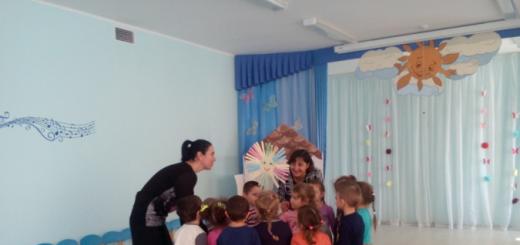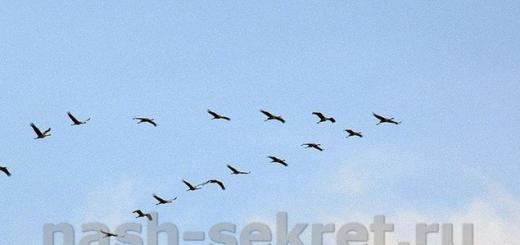In the garden
From fruit trees continue to collect fruits of autumn and winter varieties.
The freed supports must be removed. If the fruit-bearing tree was severely damaged by the codling moth, then the pupae of this pest may be on the supports with the remnants of the bark and in the cracks. It is better to burn such supports.
After harvesting, you need to thin out the crown of old fruit trees - cut out branches that fell under heavy shading and did not bear fruit.
On wet days, when the bark of old trees gets wet, it is easy to scrape it off with scrapers or thick iron brushes.
Close up all hollows and wounds.
They take off their hunting belts and burn them.
They look through the bark of trees under these belts and destroy the pupated larvae of pests.
One or two weeks after planting, strawberries are checked to see if they are buried. On a fruit-bearing plantation, bushes are planted at the sites of attacks. The soil under strawberries is kept clean from weeds.
Prepare planting pits for planting fruit and berry crops; At the end of the month, it's time to plant them.
Branches are cut from raspberries near the ground, which have yielded a crop this year.
In adult bushes of currant, gooseberry and chokeberry, first of all, all broken and dried branches are cut out. Thickened bushes are thinned out by removing weak and branches located inside the bush.
For propagation of black, white and red currants, strong annual growths are cut. Shoots should be cut only from the most productive and not affected by terry and bud mites bushes.
In the garden
Hurry up to harvest on time and use every kilogram of grown products in a businesslike manner. Non-standard vegetables are best dried, and good ones canned.
Watch the air temperature, because even with small frosts, the fruits of cucumbers, zucchini and squash can suffer. Pay special attention to the final harvest of tomatoes.
At the end of September, beets, carrots, parsley are harvested.
Last year's compost is sieved through a rare iron mesh. The entire fine fraction is used for bedding and mulching, and undecomposed residues are transferred to new compost. Everything that remains of healthy plants after harvesting, and fallen leaves from trees are added to it. Some of the leaves are saved to cover the compost for the winter.
Remove all plant remains from diseased plants from the site, burn or fill with bleach and bury in a pit.
In the flower garden
They continue to divide and transplant peonies, delphiniums, phloxes, etc.
Be sure to spud dahlias, if they did not do this in August.
At the beginning of the month, they finish planting daffodils, lilies, and after the 15th they start planting tulips.
They collect seeds of marigolds, calendula, nasturtium and other summers.
After the first frost, dahlias begin to dig.
More
Garden
In September, the mass harvesting of fruits of autumn and winter varieties of apple trees and pears begins. First of all, the finally ripened fruits are removed, preventing them from falling to the ground. The removable maturity of fruits is determined by the acquisition of a characteristic varietal color, the presence of mature seeds inside and easy separation from the fruit branch. Such fruits literally fall into the hand when touched.
It is undesirable to tear off the fruits with effort or literally unscrew from the branch, let them hang for a few more days, ripen. It is necessary to harvest in warm, dry weather before the onset of prolonged rains and frosts.
On young non-fruiting seedlings, it is necessary to pinch the tops of all annual shoots. This technique accelerates the maturation of young wood and helps to increase its frost resistance.
Potassium-phosphorus fertilizers, humus, which will simultaneously serve as a heater for the root system in the winter cold, are introduced into the trunk circles.
If it is planned to plant additional young seedlings of fruit trees, then planting pits are prepared for them in advance. From the end of September, you can start replanting fruit trees.
Particular attention should be paid to the presence of a sufficient amount of moisture in the soil. In dry weather, the garden needs watering, however, moderately. Otherwise, the trees will go into the winter weakened and will be more susceptible to freezing. If it rains periodically, then it is not necessary to water the garden.
In September, the grapes are also harvested, which are currently grown by many amateur gardeners in the middle and even northern latitudes. Clusters are carefully cut in warm, dry weather. After the first frost, the vine should be removed from the trellis and laid on the ground, after cutting off the unripe shoots and removing all the remnants of the leaves. During this period, the vine is flexible and easily twisted and stacked. If it is exposed to frost, it will become brittle and it will be much more difficult to lay it.
In the first half of the month, lignified cuttings of red currant are planted, in the second half - black currants. Cuttings with 5-7 buds are cut from the middle part of the current year's shoots and buried in the soil by 1-2 buds at an angle of 45 degrees. The planting site is well watered and during the entire warm period they make sure that the soil is sufficiently moist. With the onset of stable cold weather, the cuttings are carefully mulched with peat or humus and covered with spruce branches or other suitable material.
Adult bushes of currants, gooseberries are fed with humus or phosphorus-potassium fertilizers in accordance with accepted standards. The soil around the bushes is dug up, but not deep, remembering that the root system lies close to the surface. It is useful to lightly spud the bushes with fertile soil. It's not too late to cut out the extra old or crown thickening shoots, if this was not done in the summer.
The first decade of September is the deadline for planting seedlings of garden strawberries. Weeding, removal of growing mustaches and watering if necessary are still relevant on the fruit-bearing bed.
Garden
In the garden in September, perhaps, the hottest time. It is necessary to harvest the grown crop of all vegetable crops before frost, except for late cabbage. In dry, warm weather, potatoes are dug up. For initial drying, it can be left immediately after digging directly on the ground, scattering in one layer. And by the evening, dried tubers should be collected in nets or bags and transferred to storage. Do the same with beets and carrots.
If the weather is warm, then you can not rush to collect tomatoes from greenhouses. Healthy, disease-free bushes still give quite a good harvest. But with the advent of rainy damp weather, it is better to hurry up with the harvesting of this crop. Then all the remaining fruits are collected, used in canning, and the green ones are laid out in a warm, dry place for ripening.
A guideline for harvesting sweet peppers from greenhouses can be a decrease in air temperature to 15 degrees and below. The fact is that pepper is very thermophilic, and this temperature is the limit for its vegetation. As soon as the air warms up no higher than this mark during the day, the pepper stops growing and must be harvested immediately.
Before the first frosts, it is very important to remove cucumbers, zucchini, pumpkins, etc. These plants are very sensitive to cold, and a pumpkin that has undergone even a very short drop in temperature to zero degrees or lower will no longer be stored all winter, it will definitely rot.
The signal for harvesting spring garlic is the yellowing of its foliage by one third. The heads are carefully dug up with a shovel, removed from the soil and laid out to dry and ripen in a dry, ventilated place. Depending on the weather, this can be the bed itself or the attic, a canopy.
The areas freed from vegetables are dug up, introducing humus or fertilizers. Digging should be deep, without breaking the resulting clods of earth. So they freeze better in winter, which leads to the death of seeds of weeds and pests that have settled in the soil for wintering.
Along with cleaning, they also do planting. At the beginning of the month, a little dill, parsley, and onions can be planted on the vacant plots at the beginning of the month. Before the onset of stable cold weather, these crops will still have time to please you with young vitamin greens to the table. And if you cover them with a film, the process will accelerate.
In the second half of the month, the right time comes for planting winter garlic. Large teeth are planted to a depth of 4-6 cm, small - smaller. Tiny cloves-bulbs are carefully scattered into grooves, sprinkling them with soil for just a couple of centimeters. All plantings in dry weather must be watered.
 flower garden
flower garden
In the flower garden, the division of overgrown perennial bushes and the collection of matured seeds of annual plants continue. Weeding is still relevant: weeds are a haven for insect pests and pathogens. And neither one nor the other we do not need at all!
At the end of September, you can dig up early varieties of gladioli. At the same time, the leaves are cut with secateurs, leaving a stump of 1-2 cm, the old bulbs are carefully removed. The bulbs are washed in a solution of potassium permanganate and laid out to dry in a dry place with a temperature preferably above 25, but not below 20-22 degrees.
In order not to be mistaken with the timing of the ripening of the bulbs, you need to remember one rule. It takes about 40 days for a gladiolus bulb to fully mature after cutting the flower. Therefore, on one day you just need to cut off all the flowers and unblown arrows, and dig up the bulbs exactly after 40 days.
Of course, in this calculation, it is imperative to take into account the climatic conditions of your area. Small frosts are not at all terrible for bulbs in the soil. And in case of lower temperatures, plantings can be mulched with peat or sawdust with a layer of 8-10 cm.
On roses, it is necessary to cut off the emerging buds, because they still may not have time to bloom, but they can exhaust the bush on the eve of wintering.
Indoor flowers that spent the summer outdoors are brought into the house so that they do not suffer from significant changes in day and night temperatures.
At the end of the month, they begin planting bulbs: tulips, hyacinths, daffodils and others.
What flowers to plant in autumn










